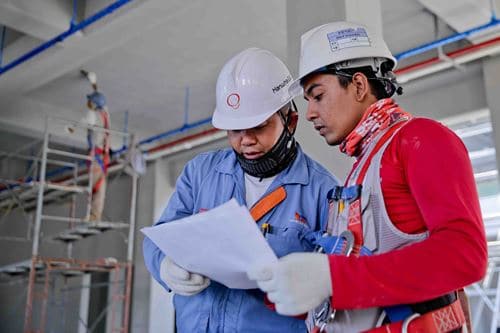All employers have a responsibility to create a safe workplace for their employees. Identifying all occupational hazards in the workplace and developing a plan to mitigate the risk associated with each hazard, is essential to maintaining a safe and healthy work environment. This post provides an overview of how employers can manage hazards and risks to workers’ safety.
What is involved in the risk management process?
Risk management in the workplace entails the following steps:
Identifying Hazards
The first step in workplace risk management is hazard identification. A hazard is anything with the potential to cause harm (e.g., chemicals, electricity, working on scaffolding, etc.).
Assessing Risks
After hazards in the workplace have been identified, it is time to assess the risk each one poses to the workers. Risk is the probability (high, medium or low) that someone could be harmed by these hazards and how severe the harm would be.
Controlling Risks
After performing the risk assessment, if there are moderate or high risks, a systematic approach must be taken to control those risks as best as possible. If the risk is being caused by unsafe work conditions, those conditions should be corrected to remove or at least reduce the risk.
Steps employers can take to improve workplace health & safety
- Inspect your workplace
Workplace inspection involves regularly checking tools and equipment to confirm they are being properly maintained. In addition to equipment, storage areas should be inspected to ensure items such as boxes and equipment are being properly organized or stacked.
Inspections should also consider how employees perform their tasks. For example, if employees are required to use ladders in their work; employers should ensure ladders are being properly setup, locked straight and placed on even ground before being used.
Employers should also inspect emergency equipment such as fire alarms, smoke detectors, sprinkler heads, emergency exits, emergency lighting, portable fire extinguishers and static fire suppression systems, first aid supplies, eye wash and chemical shower stations and rescue equipment.
- Be prepared for emergencies
One way to reduce the potential impact of an emergency situation such as fire, flood, tornado, power outage, etc. is to have emergency response plans prepared in advance; to train employees on the plans, maintain the emergency equipment and practice the plan, completing an annual fire evacuation dill is a common example of this.
- Provide employees with appropriate training
Appropriate training is a great way to prevent incidents & injuries in the workplace. Take the scenario discussed in step one; if an employee must use ladders or scaffolds for their job, employers are expected to provide training on how to do safely so.
Written instructions with visual references are ideal as it enables employees to easily check if they are unsure how to perform a task or have forgotten some of their training.
- Keep an open dialogue
Remember, your staff are the ones working on the front lines. It is important that employers provide employees the opportunity to give their opinion on what could be implemented to increase workplace safety.
For example: establish a joint health and safety committee of worker and management members in workplaces with 20+ employees, having a worker health and safety rep in workplaces with 6 – 19 employees, or meeting regularly with all employees in smaller workplaces.
- Investigate incidents
Should an injury occur in the workplace, investigating the incident enables the employer to understand why the incident took place and take actions to prevent a similar incident from happening again.
- Keep records
Keep records of first aid treatments, inspections, incident investigations and training activities. Employers can use this information to identify trends regarding unsafe conditions and practices in their workplace.
Still have questions about health and safety in the workplace?
For further insights on workplace hazards, speak with our health and safety advisors to ensure your business is compliant with applicable safety laws: 1 (833) 247-3652.




